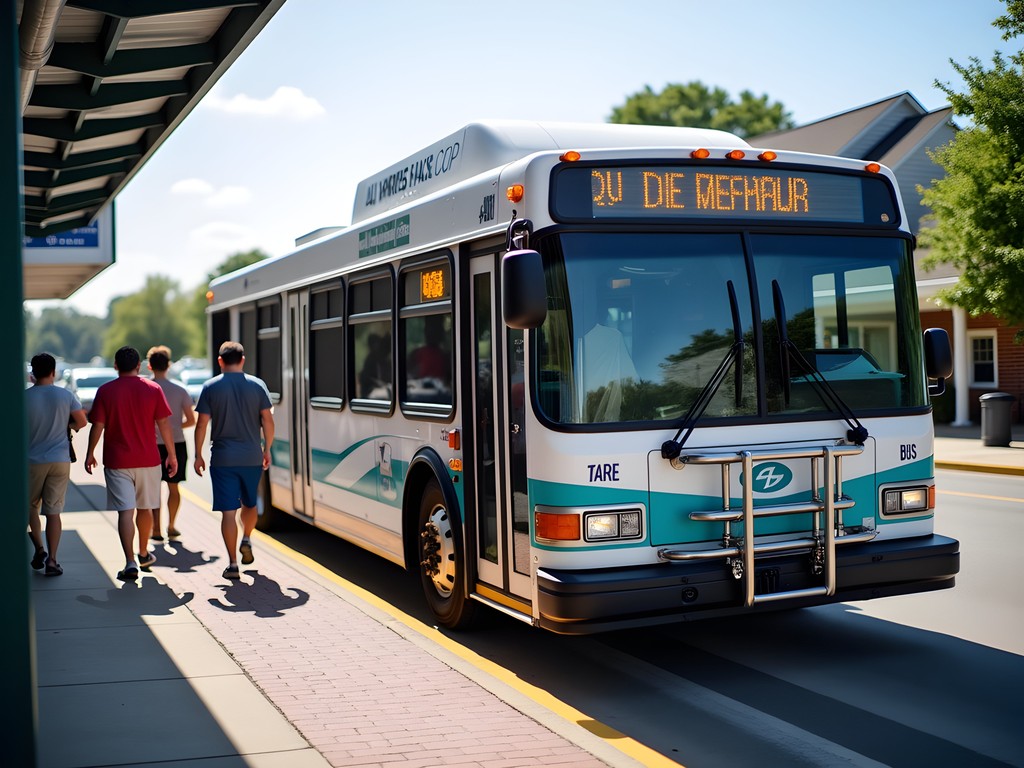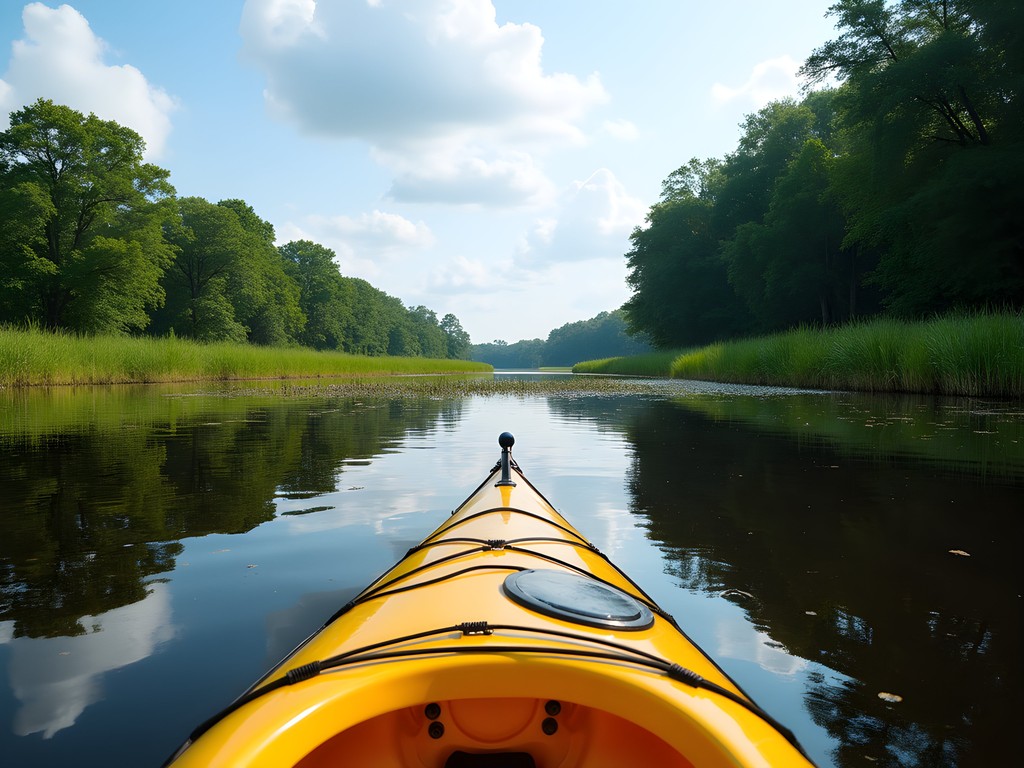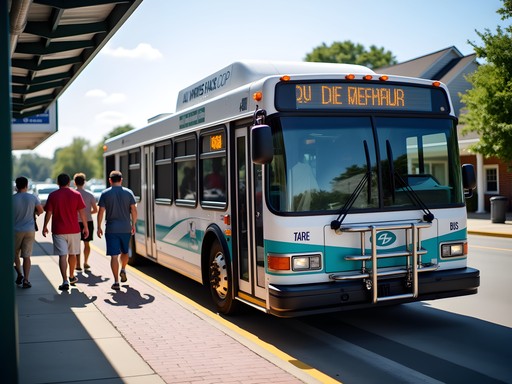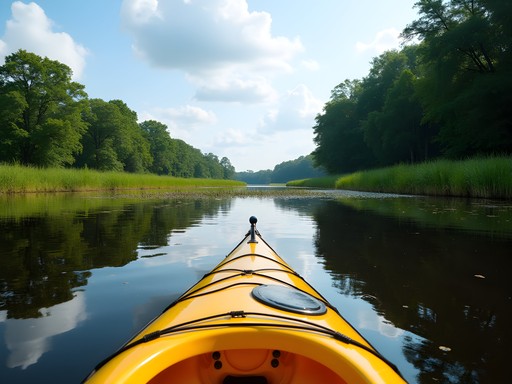Disclosure: This article contains affiliate links. We may earn a commission from purchases at no extra cost to you, which helps our travel content.
When I traded the Rio Grande for the Wicomico River last summer, I wasn't expecting to find such a fascinating microcosm of Eastern Shore ecology and culture in Salisbury, Maryland. Even more surprising? I navigated this entire adventure without once sitting behind a wheel. As someone who's paddled border waters and traversed national parks on a budget, I've learned that car-free travel isn't just economically sound—it connects you to a place in ways that driving simply can't. So grab your walking shoes and transit pass as I break down how to experience Salisbury's natural beauty, historical charm, and unexpected wildlife corridors without the burden of a rental car.
Getting to Salisbury: Your Car-Free Entry Points
Arriving in Salisbury without your own vehicle requires some planning, but it's entirely doable. I caught the BayRunner Shuttle from BWI Airport directly to Salisbury for $59 one-way—significantly cheaper than a rental car for a week. The shuttle drops you at the Springhill Suites on East Main Street, conveniently located within walking distance of downtown.
Alternatively, Greyhound serves the Salisbury bus station on South Division Street, though schedules can be limited. For those coming from Washington DC, take Amtrak to Baltimore then transfer to the BayRunner Shuttle.
Once in town, I immediately set up my digital transit tools. The Shore Transit app became my lifeline, showing real-time bus locations across the region. I also downloaded Maps.me for detailed walking directions when cell service got spotty in some of the nature areas. Having offline maps proved invaluable when exploring the outskirts of Pemberton Historical Park later in my trip.

💡 Pro Tips
- Book the BayRunner Shuttle at least 24 hours in advance for guaranteed seating
- Download transit apps before arriving as cellular service can be spotty
- Consider packing a lightweight rain poncho as many bus stops lack shelters
Mastering Shore Transit: Your Lifeline to Exploration
Shore Transit serves as the backbone of public transportation in Salisbury and throughout Maryland's Eastern Shore. With routes connecting Salisbury to Ocean City, Pocomoke, and Cambridge, it's surprisingly comprehensive for a rural region.
The fixed routes operate Monday through Saturday with limited Sunday service. A day pass costs just $3—an absolute steal compared to daily car rental rates. Route 111 became my most-used line, connecting downtown with Salisbury University and the Salisbury Zoo. Route 108 takes you to the Fruitland Walmart for supplies, while Route 432 ventures to the Ward Museum of Wildfowl Art and Peninsula Regional Medical Center.
The key to success is understanding the timing. Buses typically run once per hour, so I used my portable charger to keep my phone powered for checking schedules. Missing a bus can mean a significant wait, especially in the evening when service becomes less frequent. I learned this lesson the hard way after spending too long photographing herons at Pemberton Park!

💡 Pro Tips
- Purchase a weekly pass ($15) if staying for multiple days
- Buses run approximately once per hour—don't miss your connection
- Drivers can provide paper schedules if you ask
Pedal Power: Biking Salisbury's Hidden Corridors
After two days of bus-hopping, I discovered Salisbury's growing bike-friendly infrastructure. The city offers a bike share program with stations downtown and near Salisbury University. For $5/day or $25/week, you can unlock unlimited 60-minute rides—perfect for short hops between attractions.
The crown jewel for cyclists is undoubtedly the Salisbury Rail Trail, a converted railway path that cuts through the heart of the city. This 1.5-mile paved trail connects downtown with Fruitland, passing through surprisingly lush greenery that reminded me of the riparian zones back in Texas, though with distinctly Eastern Shore flora.
For longer adventures, I rented a proper touring bike from Salisbury Cycle for two days ($35/day). Their pannier bags rental add-on was perfect for carrying my camera gear and water supplies while exploring Pemberton Park and the rural roads toward the Nanticoke River.
I was pleasantly surprised to find that most Shore Transit buses are equipped with bike racks, allowing me to combine transit and cycling for longer excursions. This hybrid approach became my preferred method for reaching the outskirts of town.

💡 Pro Tips
- Always lock your bike, even in seemingly safe areas
- Download the Salisbury Bike Share app before arriving
- Bike lights are legally required after sunset—the bike share bikes have built-in lights
Walking Salisbury: Urban Trails and Nature Escapes
Salisbury's compact downtown core is eminently walkable, with the Riverwalk serving as its scenic centerpiece. This 1.2-mile paved path follows the Wicomico River, connecting downtown with the City Park. I spent countless early mornings here with my travel mug filled with locally-roasted Rise Up coffee, watching great blue herons hunt in the misty waters—a scene that transported me back to dawn kayaking trips on the Rio Grande.
Beyond downtown, the city maintains several urban walking paths. The Camden Avenue Trail connects Salisbury University with downtown, while the Princeton Homes Trail offers a 1.8-mile loop through residential neighborhoods with surprising pockets of wetland habitat.
For nature enthusiasts, Pemberton Historical Park lies about 4 miles from downtown. While technically reachable by Shore Transit (with some walking), I found cycling there most practical. The park features 4.5 miles of nature trails through forest and marsh ecosystems that felt wonderfully remote despite being so close to the city.
My favorite walking discovery was the Ward Museum grounds, where a short but rewarding nature trail loops around a pond frequented by the very waterfowl celebrated in the museum's collections. I spotted wood ducks, herons, and even a bald eagle during my visits—all without needing a car to access wildlife viewing opportunities.

💡 Pro Tips
- Wear proper footwear—many trails become muddy after rain
- The Riverwalk is well-lit at night and safe for evening strolls
- Carry water and sun protection, especially for longer walks to Pemberton Park
Day Trips: Extending Your Car-Free Range
While Salisbury itself offers plenty to explore, the Eastern Shore's broader attractions aren't off-limits to car-free travelers. Shore Transit routes extend to several noteworthy destinations.
Ocean City is accessible via Route 452, though the trip takes about 90 minutes each way. I packed my dry bag for a beach day, which proved essential for keeping my camera gear sand-free while exploring the shoreline. The contrast between Salisbury's riverine ecosystem and Ocean City's coastal environment makes for a fascinating ecological comparison.
For a taste of small-town Eastern Shore life, Route 124 connects to Pocomoke City, where the Pocomoke River State Forest offers additional hiking opportunities. The Delmarva Discovery Museum there provides excellent context on the region's natural and cultural history.
Perhaps my favorite day trip was to Vienna via Route 102. This tiny historic town sits along the Nanticoke River, offering a glimpse into the Eastern Shore's maritime past. I arranged a half-day kayak rental with Adrenaline High (they'll pick you up from the Vienna bus stop with advance notice) and spent hours paddling the Nanticoke Water Trail, documenting shoreline erosion patterns for my personal conservation research while spotting bald eagles and river otters.

💡 Pro Tips
- Plan day trips carefully around bus schedules—missing the last return bus can be costly
- Bring sufficient snacks and water as rural destinations have limited services
- Call attractions in advance to confirm they're open—many have seasonal or limited hours
Final Thoughts
After a week of bus rides, bike paths, and walking trails across Salisbury, I've conclusively busted the myth that you need a car to explore Maryland's Eastern Shore. Not only is car-free travel here possible, but it also offers a richer, more immersive experience than you'd get behind a windshield. The slower pace forced me to notice details I might have missed otherwise—like the great blue heron rookery visible from the Route 111 bus window, or the community garden projects tucked between historic neighborhoods.
Beyond the environmental benefits, traveling Salisbury without a car connected me with locals in authentic ways. From bus drivers suggesting hidden fishing spots to fellow cyclists pointing me toward the best crab shacks, these interactions became the highlight of my journey. As someone who's documented threatened ecosystems across North America, I found Salisbury's blend of urban convenience and natural beauty surprisingly accessible without contributing to the region's carbon footprint.
So next time someone tells you that America's small cities require a car—well, you know what I say to that. Challenge accepted. Pack your walking shoes, download those transit apps, and discover how Salisbury's Eastern Shore charm unfolds at human speed.
✨ Key Takeaways
- Shore Transit provides comprehensive bus service throughout Salisbury and to neighboring communities for just $3/day
- Combining public transit with cycling maximizes your exploration range while maintaining flexibility
- Salisbury's Riverwalk and Rail Trail offer car-free corridors connecting major attractions
- Advance planning is essential, especially for day trips and activities outside the city center
📋 Practical Information
Best Time to Visit
May through September
Budget Estimate
$50-100 per day
Recommended Duration
3-7 days
Difficulty Level
Moderate
















Comments
waveguide
Pro tip: download the Shore Transit app before you go. The real-time tracking saved me when a bus was running 15 minutes late and I didn't have to stand around wondering.
Megan Martin
Christopher, your post couldn't have come at a better time. I've been coordinating business trips to Salisbury University and was looking for transportation solutions beyond the standard rental car approach. The Shore Transit connection from BWI that you mentioned is exactly what my colleagues need. I particularly appreciate your detailed breakdown of the bike share program - I've added it to our corporate travel guide as an option for getting around during conferences. One recommendation for business travelers: the travel daypack fits perfectly in the bike baskets while still holding a laptop and conference materials.
photoninja
That shot of sunset over the Wicomico River is stunning! Perfect capture of what makes this area special.
smartexplorer
This is AMAZING! I've lived in Maryland my whole life and always thought Salisbury required a car. Just used your guide for a weekend trip and had the best time! The Shore Transit app was a game-changer and we discovered so many cool local spots by walking. The coffee shop you mentioned near the river (Rise Up) had the BEST breakfast sandwiches ever! Thanks for opening my eyes to car-free possibilities in my own backyard!
luckywanderer
How accessible is all this for someone with mobility issues? My mom uses a walker and we're planning a trip.
photoninja
My aunt visited with a mobility scooter last year. All Shore Transit buses are accessible. Downtown sidewalks were good but some of the nature trails were challenging. City Park was very accessible though!
luckywanderer
Thanks so much! That's really helpful to know.
smartbackpacker
Used Shore Transit last month and it was surprisingly reliable. The bike racks on buses were clutch!
Douglas Bradley
Christopher, this is an excellent analysis of Salisbury's transit options. I explored the Eastern Shore last fall and was similarly surprised by the viability of car-free travel there. The Shore Transit system is indeed the unsung hero of the region. One thing I'd add is that the seasonal schedules can be quite different - summer offers more frequent service to coastal connections. I found the Wicomico River walk particularly accessible and well-connected to downtown. Did you manage to explore any of the surrounding small towns using just public transit?
waveguide
Douglas - did you try getting to Assateague from Salisbury without a car? Wondering if that's doable or if I should just plan to rent for that day trip.
Douglas Bradley
It's possible but requires planning. Take Shore Transit Route 432 to Ocean City, then the seasonal Assateague Island Shuttle. Just check schedules carefully as the last return bus leaves earlier than you might expect!
tripvibes
This is so refreshing! Never thought of Salisbury as a car-free destination but you've got me convinced!
wildwanderer
Love this! Car-free travel is so underrated. Did you have any issues with carrying purchases or groceries without a car?
Christopher Harris
Great question! I used my packable daypack which folds into a tiny pouch but expands for shopping. Most places in downtown Salisbury are walkable from accommodations, and there's a small market near the transit center!
springninja
Just tried your recommended bike route along the river and it was AMAZING! The fall colors were starting to pop and we even spotted some wildlife. Thanks for the inspiration!
Venture X
Premium card with 2X miles, $300 travel credit, Priority Pass